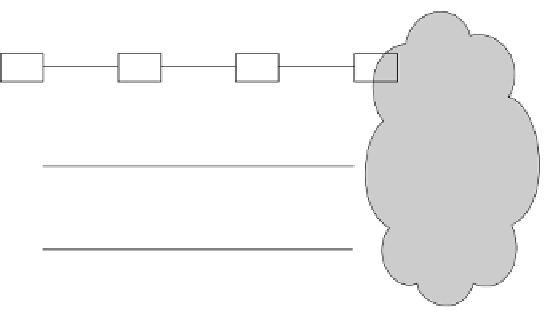Information Technology Reference
In-Depth Information
ISDN Architecture
Figure 5-10
TE1
NT2
NT1
LE
S
T
U
TE2
TA
NT2
NT1
LE
Carrier
R
S
T
U
LE
TE1
NT12
S/T
U
The following summarize the reference points:
•
U—Between NT1 and LE, 2-wire
•
T—Between NT2 and NT1, 4-wire
•
S—Between TE1 or TA and NT2
•
R—Between TE1 and TA, usually an EIA/TIA-232
ISDN Interfaces
ISDN interfaces (or services) are provided in two major forms. First, the BRI provides two
bearer (B) channels and one data signaling (D) channel. Each B channel operates at 64 kbps
and carries data traffic. The D channel operates at 16 kbps and carries signaling and control
information. In some instances, you can use the D channel for additional data traffic. BRI
interfaces are referred to as 2B+D.
Datagram encapsulation is required on BRI interfaces to provide data connectivity. Usually, you
use PPP encapsulation, although HDLC is the default. All the options for datagram encapsulation
are shown in Example 5-8. Frame Relay and X.25 are discussed in this chapter. HDLC and PPP
are covered in this section. Combinet Proprietary Protocol (CPP) is not covered in this topic.
Example 5-8
ISDN Encapsulation Options
R5(config-if)#encapsulation ?
cpp Combinet proprietary protocol
frame-relay Frame Relay networks
hdlc Serial HDLC synchronous
lapb LAPB (X.25 Level 2)
ppp Point-to-Point protocol
x25 X.25
















Search WWH ::

Custom Search